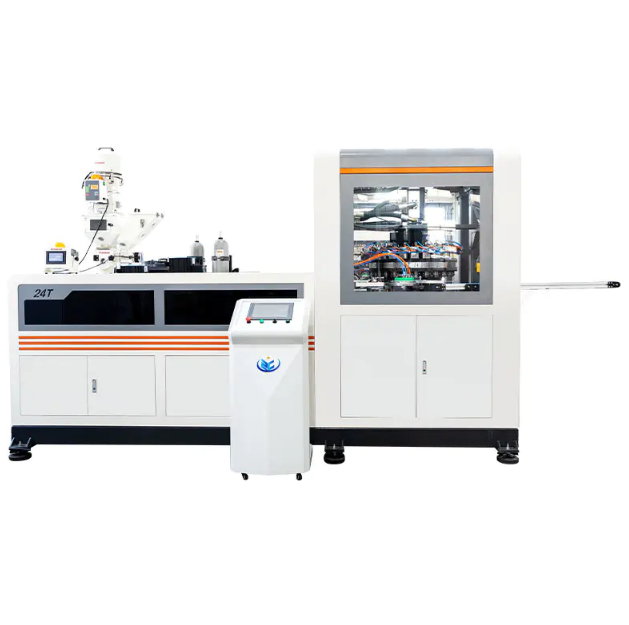Cap compression moulding machines form plastic closures by placing measured polymer preforms into open mould cavities, applying heat, and pressing them into final shape. This method relies on direct compression rather than high‑pressure injection, resulting in a simpler process flow and reduced mechanical complexity.
In a typical cycle, preforms are manually or automatically placed into the lower mould half. A heated upper platen descends to enclose the preform, transferring heat to soften the material. Once the polymer reaches the correct viscosity, compression plungers exert controlled force to press the preform against the cavity walls. After a brief dwell period for material setting, the platen retracts and the finished cap is ejected.
Compression moulding consumes less energy compared to injection systems because it avoids high‑pressure melt injection and long screw‑retraction cycles. The absence of runners or sprues reduces material scrap, and the precise preform dosing ensures uniform wall thickness. This process is particularly suited to simple cap geometries—such as screw‑threaded lids or flat‑top closures—where tight dimensional accuracy and consistent sealing surfaces are required.
These machines are popular for small to medium batch sizes and prototyping, offering lower initial investment and straightforward maintenance. Tooling typically consists of a two‑piece mould with interchangeable cavity inserts, allowing for custom cap profiles. Temperature and pressure controls are managed via a user‑friendly interface, and safety interlocks protect operators during panel opening. Overall, cap compression moulding machines provide an accessible, efficient means to produce plastic closures with reliable quality and minimal waste.

